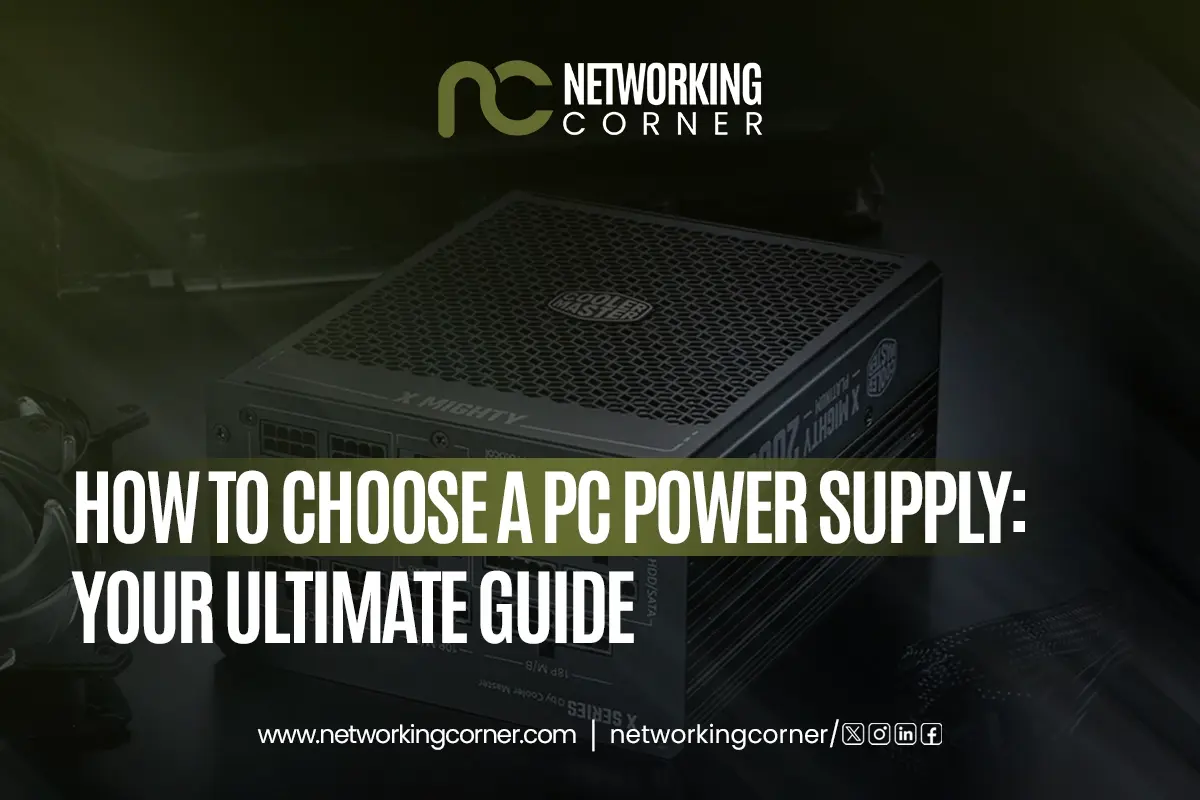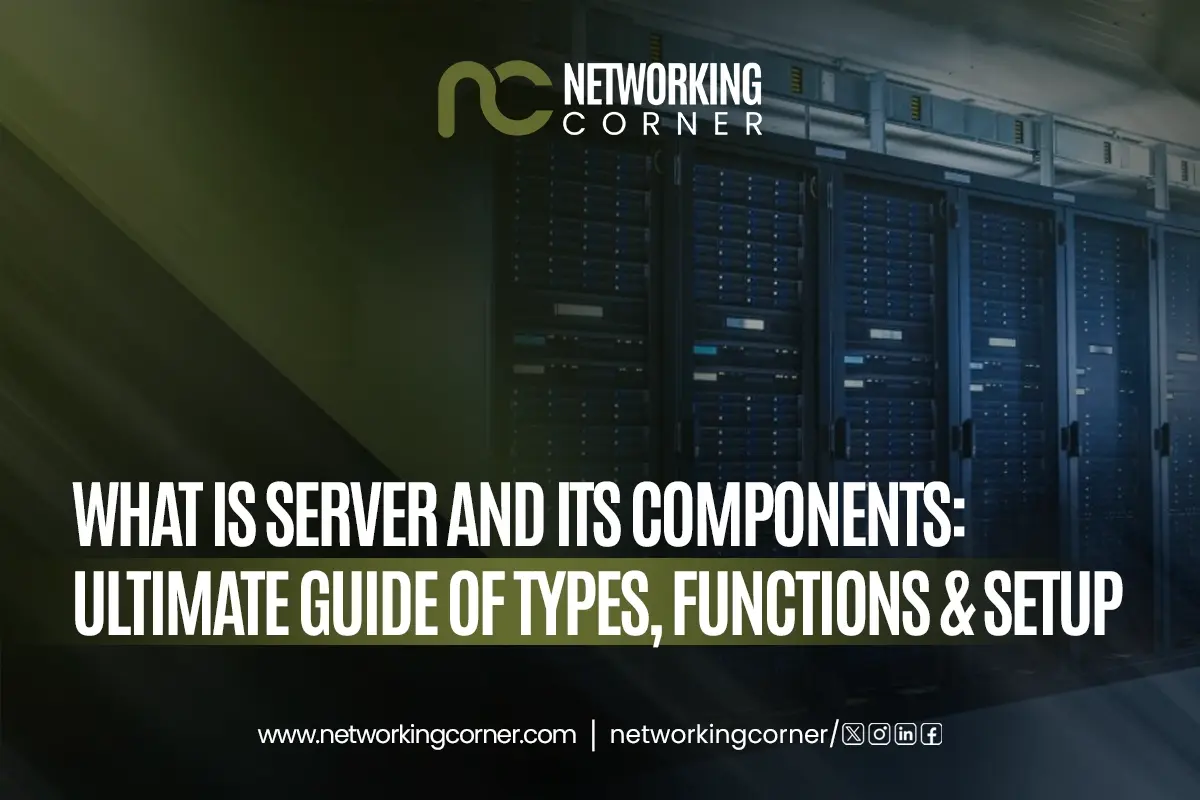
Modern computing relies on servers, which run your websites, cloud storage, business applications, and data centers. Similar to normal computers, servers are designed to perform uninterrupted tasks, have the capacity to serve a large number of users, and behave in a very reliable and efficient manner. Whether you're running a business or building a home lab, understanding what makes up a server is essential to making informed hardware and setup choices.
In this article, we will dissect what a server is, how it works, the fundamental aspects of a server, different types of servers, and how you can establish one yourself, whether as a home user or in a workplace (there are significant similarities between these two).
What is a Server and Its Main Functions?
In its simplest form, a server is a form of computer system that accepts services, data, or resource requests on behalf of other computer systems (clients), often in an environment that includes a network. Servers can be either bare-metal machines or cloud instances. Unlike the common desktop PCs, servers are developed to accommodate 24 hours a day, 7 days a week operation, high performance, as well as scalability.
Key Functions of a Server Include
- Data Hosting & Storage: Files, databases, and backups are stored on servers and are accessible to other users or systems.
- Application Hosting: They host applications that other networked devices utilize, such as email servers or CRM systems.
- Web Hosting: Web servers provide web-based content and services to internet users on the internet or an intranet.
- Resource Sharing: There are common printers, folders, software, and so on managed by servers over a network.
- Security and Access Control: They offer centralized user roles, data protection, and authentication administration.
- Database Management: Query processing and data integrity are managed by dedicated database servers.
Servers play a critical role in all organizations that rely on safe, quick, and dependable access to applications, files or cloud-based applications. Whether it is a small office server PC configuration or a large data center, they still form the heart of any contemporary IT system.
Key Components of a Server Explained
With an understanding of what servers are and how they work, we should now have insight into the components that make the machines so strong and stable. Every component makes a specific contribution to achieving performance, uptime, and scalability, particularly in challenging systems within data centers and enterprise networks.
Server Motherboards
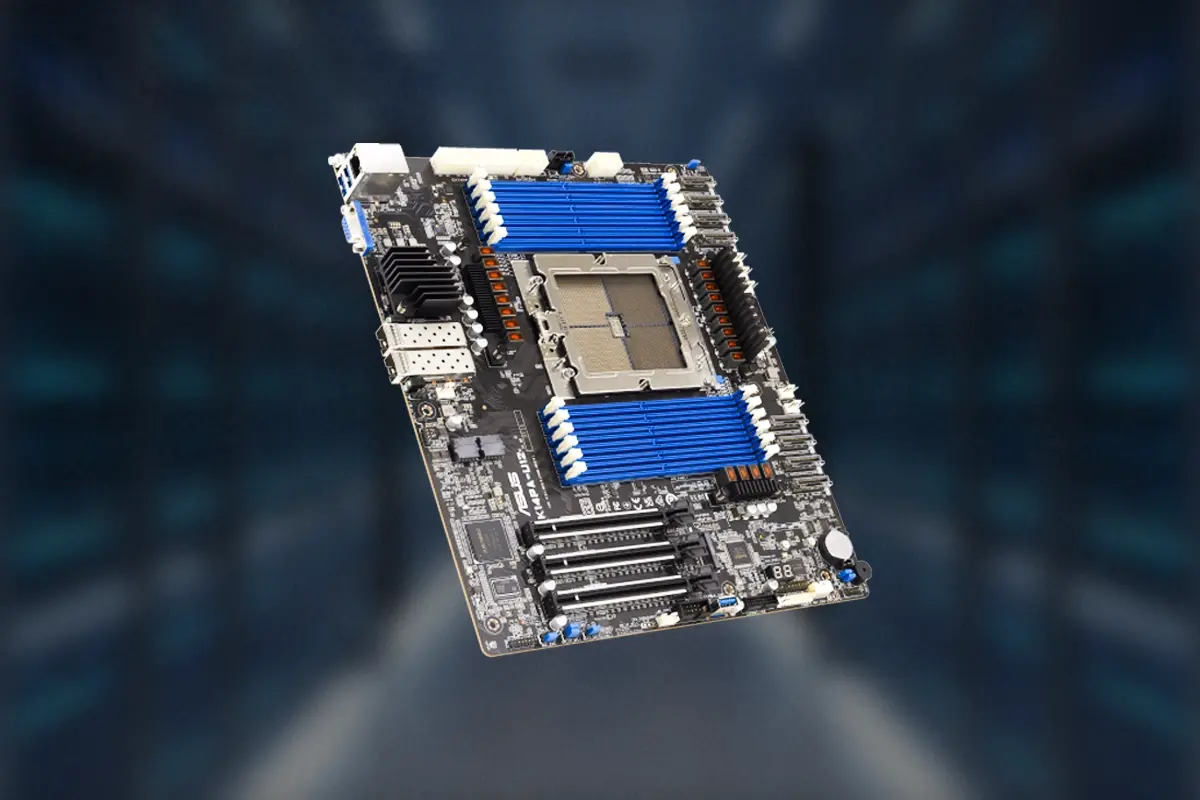
The backbone of any server system is what we refer to as the server motherboard, or, in other words, a server board. It links and interconnects all the crucial hardware accessories such as the CPU, memory, devices used for storage and expansion cards. An efficient server motherboard will provide reliable operation and energy capability as well as enterprise-level functionality.
Server motherboards are more durable and offer more powerful functionality than consumer-grade motherboards. They facilitate the support of ECC (Error-Correcting Code) memory, multiple CPUs, and large amounts of I/O expansion slots. Even the provision of out-of-band management jeopardizes some of the models, as IPMI is a key in managing remote servers.
While there are a few fans looking to use a server motherboard for gaming, these boards are not designed with graphics or sensitive latency in mind. They are slow to instability, not fast. Decisions on server motherboard choice depend on what you wish to run on your server, compatibility of the processor(s), the memory supported, and the availability of options such as onboard RAID controllers or high-speed networking compatibility.
Server Memory (RAM)
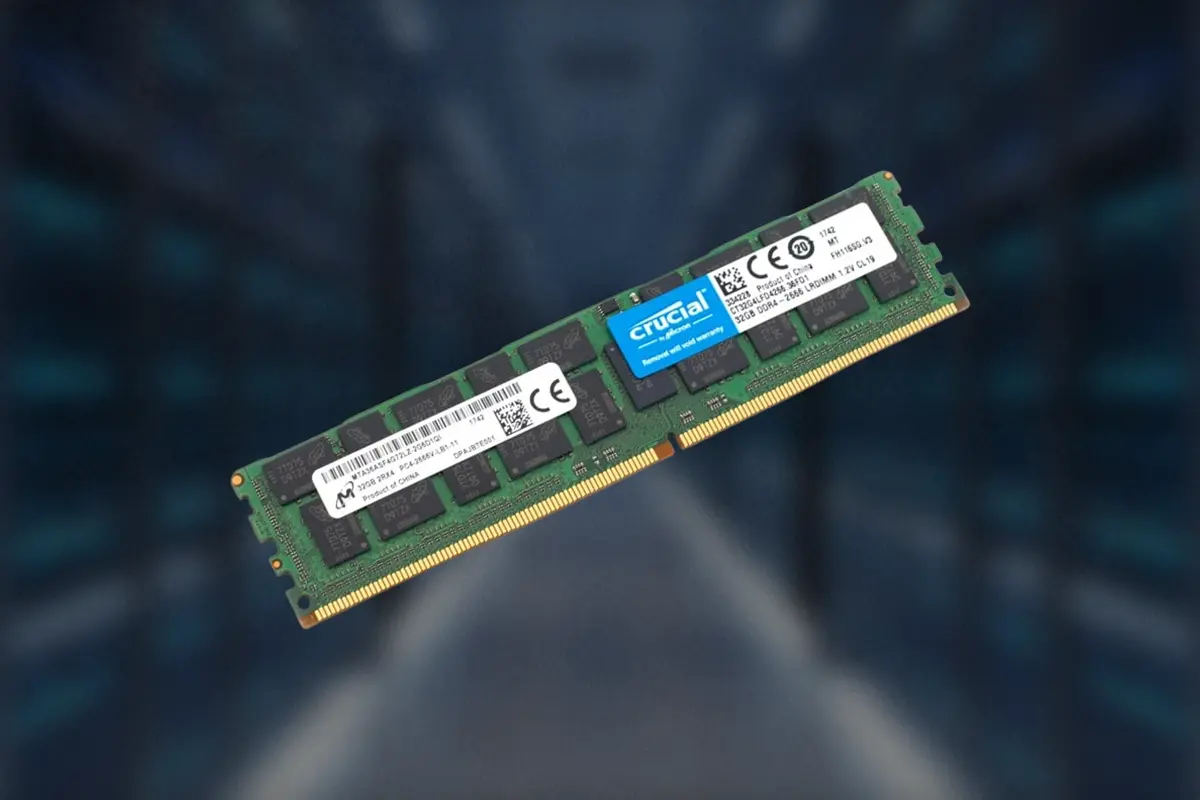
Another important component in a server's performance is memory, also known as RAM. Some servers, unlike standard consumer systems, typically use error correction code (ECC)- based memory, which can detect and correct data corruption in real-time. This ensures that there are no crashes and data losses; thus, ECC RAM is absolutely necessary for handling mission-critical applications and tasks, such as database management and virtualization.
Scalability is also given to server memory. Most server boards can have numerous RAM channels and high densities (usually 512GB and above), which enable the system to successfully utilize immense workloads. Whether running VMs, handling large volumes of data, or hosting applications, sufficient RAM is available to prevent the computer from becoming a bottleneck.
Server RAM and server memory are frequently used synonymously, but have the same meaning: modules of high performance and error correction made specifically to support consistent uptime and dependability. It is always wise to check the compatibility of the memory with your motherboard and CPU before making a purchase.
Server Hard Drive

The storage is the core part of any server, and the selection of the server hard drive configuration can have a significant influence on performance and reliability. The servers utilize a combination of storage types in proportion to the application, including traditional HDDs, high-speed SSDs, and extremely fast NVMe drives. One does its work:
- HDDs (Hard Disk Drives) are a cost-effective and versatile solution for archiving, backing up, or storing non-critical data.
- SSDs (Solid State Drives) offer significantly faster read/write speeds, making them ideal for use in application hosting and high-speed data access.
- NVMe (Non-Volatile Memory Express) drives offer leading-edge performance, particularly when handling large amounts of data, such as in media production or analytics.
Besides speed, redundancy is a great consideration in server storage. The vast majority of enterprise servers utilize RAID (Redundant Array of Independent Disks) to enhance fault tolerance. RAID allows for the mirroring (RAID 1), striping (RAID 0), or both (RAID 10) of data to increase speed and safety.
External hard drive servers can also be used for storage backup or as an added storage capacity, although internal drives are preferred due to their high performance and ease of integration.
Server Power Supply
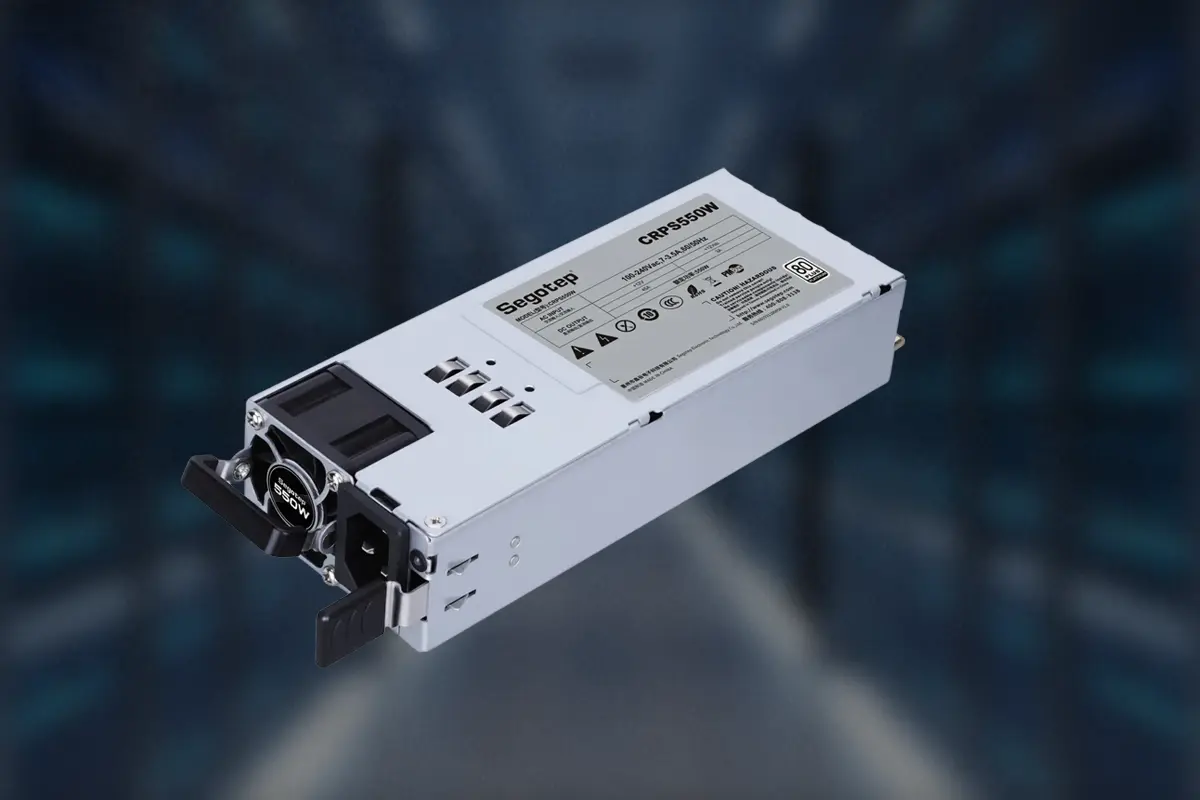
Its design is then based on the reliability, efficiency, and redundancy of the server power supply as opposed to being a component that supplies electricity. Server PSUs can be, unlike consumer PC power supplies, in redundant form: two or more power supplies are connected to each other. Failure of one of them leads to an immediate switch to another one with no downtime.
On critical systems, it is a very good idea to pair your PSU with an uninterruptible power supply for server. A UPS prevents power surges, brownouts, and blackouts, allowing the server time to safely shut down or connect to backup generators. This is one of the features that is non-negotiable in business environments where uptime is a fundamental consideration.
Server power supplies are also designed to be capable of a greater wattage in order to support power-hungry CPUs, numerous drives and GPUs. The total load of your system should also be considered when selecting a computer server power supply, as it is essential to choose one that meets your total load and supports simultaneous hot-swapping to minimize interruptions in case one component fails.
Server GPU and GP GPU Solutions
Most contemporary servers will benefit from graphics processing capabilities to perform specialized jobs, such as AI editing, 3D rendering, deep learning, and virtualization. Server GPU Workstations and GP GPU Solutions enter the picture here. Though ordinary server systems are centered on CPU-centric workloads, the particular configurations are optimized to concentrate on parallel processing and graphical jobs.
The Server GP GPU Solution (General-Purpose GPU) utilizes the GPU to perform data processing functions that were previously handled by the CPU. This is particularly helpful in sectors such as finance, AI/ML, and scientific computing, where enormous quantities of information must be processed simultaneously.
A Server GPU Workstation is, instead, an intermediate between a high-performance PC and a server. It is ideal for media professionals or engineers who want the power of a workstation but have the management and reliability of a server.
To determine the PCIe slots required by the GPU, verify that the motherboard of your server and power supply have the necessary number of PCIe slots and power connectors.
Server Chassis and Barebones
All the internal components are enclosed and isolated within the server chassis, also known as a server case, which maintains air circulation, manages cables, and delivers power. They are generally of two types:
- Tower Chassis: Self-contained servers that resemble PC desktops; small offices or home labs favor their use.
- Rackmount Chassis: Server racks are fitted to modernized centers; they are used to optimize density and cooling.
Other implementations involve the use of server barebones, which are semi-built versions consisting of the chassis, motherboard, cooling, and occasionally the power supply. They are ideal for an IT professional who desires flexibility but doesn't want to start from scratch.
Rack-based environment and standalone server setups. The same applies to selecting the appropriate chassis, which is based on factors such as space, cooling requirements, the number of components, and even cooling needs.
Server Cables and Connectivity
Cabling often goes unnoticed, but the server cables are essential for fast data transfer, delivering power, and maintaining system stability. Typical server cable types are:
- Power Cables: They join PSUs to power sources or UPS units
- SATA/SAS Cables: Connects storage drive to controllers or motherboards
- Ethernet Cables: High-speed networking via Switches/ routers
- Power Splitters: These are used to connect multiple components efficiently.
- Y-Cables: These are adaptations of the power splitters.
Management of cables is also an essential issue. Inadequate cabling may cause airflow to be blocked, raise the failure rate and complicate troubleshooting. Installing labelled, color-coded, or structured cabling inside server racks makes maintenance more reliable and reduces downtime.
Types of Servers and Their Use Cases
There are servers of different types, each of which is adapted to a particular task or workload. Such knowledge assists you in the process of deciding the kind of server system to adopt in your home, office, or data center. Since there are websites to train and run huge AI models, every type has a different role to play in contemporary computing infrastructure.
Now we should examine the most popular kinds of servers and their locations:
Application Servers
The application servers provide an environment and execute certain applications, which simple network clients then use. These servers cater to business logic, data crunching, and user access, serving as the central point of contact when all enterprise-related general software, such as ERP, CRM, or HRM systems, needs to be integrated.
- Use Case: Internal business apps, email, or a collaboration application tool such as SharePoint.
- Advantage: Centralized application-controlled, and multi-user secure access.
Web Servers
A web server is a server used to store and dispense website content to Internet users or within an intranet. It serves HTTP/HTTPS requests sent by browsers and returns HTML pages, images, scripts or other resources.
- Examples: Apache, Nginx, Microsoft IIS
- Use Case: Hosting websites, blogs, portals or SaaS apps
- Advantage: Offers secure and scalable access to online products and services
File Servers
A file server is a central server that stores files for use by multiple users. It enables the sharing of documents, media and backups across a network.
- Use-Case: Offices, media hubs, and schools.
- Advantage: Easier usage of files and centralized backing up
Database Servers
These are the servers that have database management systems (DBMSs), such as MySQL, PostgreSQL, Microsoft SQL Server, or Oracle Database. A database server is used to process and respond to SQL requests from client machines or applications.
- Use Case: To power websites, business apps and data analytics
- Advantage: Fast queries, data integrity and multi-user accessibility
Game Servers
Game servers are specialized servers that run games that have online multiplayer capabilities. They keep the game state, process player activities, and maintain real-time synchronization between users.
- Use Case: Hosting competitive or teamwork-based multiplayer (e.g., Minecraft, CS:GO or ARK)
- Advantage: Pollution-free, low IO delay, and persistent worlds
Component Servers
Distributed computing utilizes component servers, which are servers that host specific software components or services that multiple applications can reuse. They are in favor of modular design, and they tend to show up in enterprise software architecture.
- Use Case: Microservices, SOA (Service-Oriented Architecture)
- Advantage: Makes code more reusable, scalable, and modular in design
GPUs Servers / Workstations
We make GPU server or server GPU workstations for work that utilizes a lot of parallel processing. They also contain powerful GPUs, in addition to traditional CPUs, which are found in servers and are necessary for graphics-intensive or performance-intensive workloads.
- Use Case: AI/ML training/3D rendering, video processing, simulation
- Advantage: Faster data processing, decrease in compute time, and support for deep learning frameworks
Server Racks, Cabinets, and Network Switches
A well-configured server cannot function properly without reliable housing and connectivity infrastructure. This is where server racks, cabinets and switches are used. These elements assist in organizing, safeguarding, and optimizing server settings in a small office and in a data center on an enterprise scale. Knowledge of how they interact means an optimal flow of air, cable routing, and network performance.
Server Racks and Cabinets
Server racks are frames or standardized enclosures to mount several servers and other IT systems in a vertical installation. They vary in size, often measured in terms of so-called rack units (U), where, e.g., 1U = 1.75 inches of height. The most common ones are 24U, 42U and even 42U and higher units to contain data centers.
Server cabinets are lockable racks that provide added security, cable management, and improved airflow management. They tend to be lockable and feature front/rear doors, as well as fans and cable entries. Whether it's a rack or a cabinet, determining the correct size and design layout will optimize space utilization and keep maintenance simple.
- Use Case: Mounting of server systems, switches, UPS and patch panels
- Disadvantage: Scale, physical safety, organized infrastructure and better cooling
Server Switches

Server switches are networking systems that interconnect servers in a local area network (LAN) and enable them to communicate with each other, storage systems, and end-users. Any networked server layout uses these switches as the backbone of a network, particularly over a data centers or office.
There are usually two types:
- Layer 2 Switches: Forward packets based on the MAC address; best suited for low-latency LAN applications.
- Layer 3 Switches: Provide both routing and switching capabilities, making them applicable in large/segmented networks.
Under the server switches, you will also need to decide on port speed (1G, 10G, 40G+), PoE support, redundant options, and manageability (managed vs. unmanaged switches). In heavily loaded traffic systems, a powerful switch ensures the seamless movement of data without any irreparable packet drop or delay.
- Use Case: Integration of numerous servers, storage devices, and users
- Advantage: Traffic control in the centralized network and a fast data transfer rate
Conclusion
The applications would be powered by servers, storage, and maintenance of business processes. Knowledge of the parts that make up a system, such as the motherboard on the server, memory, storage, and Power supply, will enable you to create a system that suits your needs. Whether for domestic or business purposes, there is a right arrangement that guarantees performance, security, and reliability. Your server will deliver good results in any environment with proper planning and maintenance.
FAQs
What are the key components of a server?
The primary ones are the server motherboard, ECC memory, storage units (HDD/SSD/NVMe), power supply, and the GPU (where necessary). The others are chassis, cables, and server racks. All the pieces contribute to performance scale and stability, tailored to your environment and workload.
What are the differences among application servers, component servers and web servers?
Application servers execute software services, component servers contain reusable modules in the distributed environment, and web servers provide web content. They all individually fulfil different roles and manage logic, content delivery or modularized service actions.
Why are servers important in a business environment?
Servers maintain centralized data access, security, collaboration and uptime. They process requests, administer users, maintain vital data, and automate the workflow-they are extremely important in the efficiency and growth of various operations.
How do I choose the right server components for my needs?
Identify which use case you are looking at: basic storage, app hosting, or high-performance work. Pair it up with the appropriate motherboards, RAM, drives, and power supply. Also take into account future scalability, redundancy and whether you require GPU or rack-mounted configurations.
How do I set up a basic server at home or in the office?
Choose the components, assemble the machine, or buy a barebones kit. Install an OS (Linux or Windows Server), set the network details, and enable the required amenities. Make sure it is clay and backed up, and that the power is UPS-protected.




